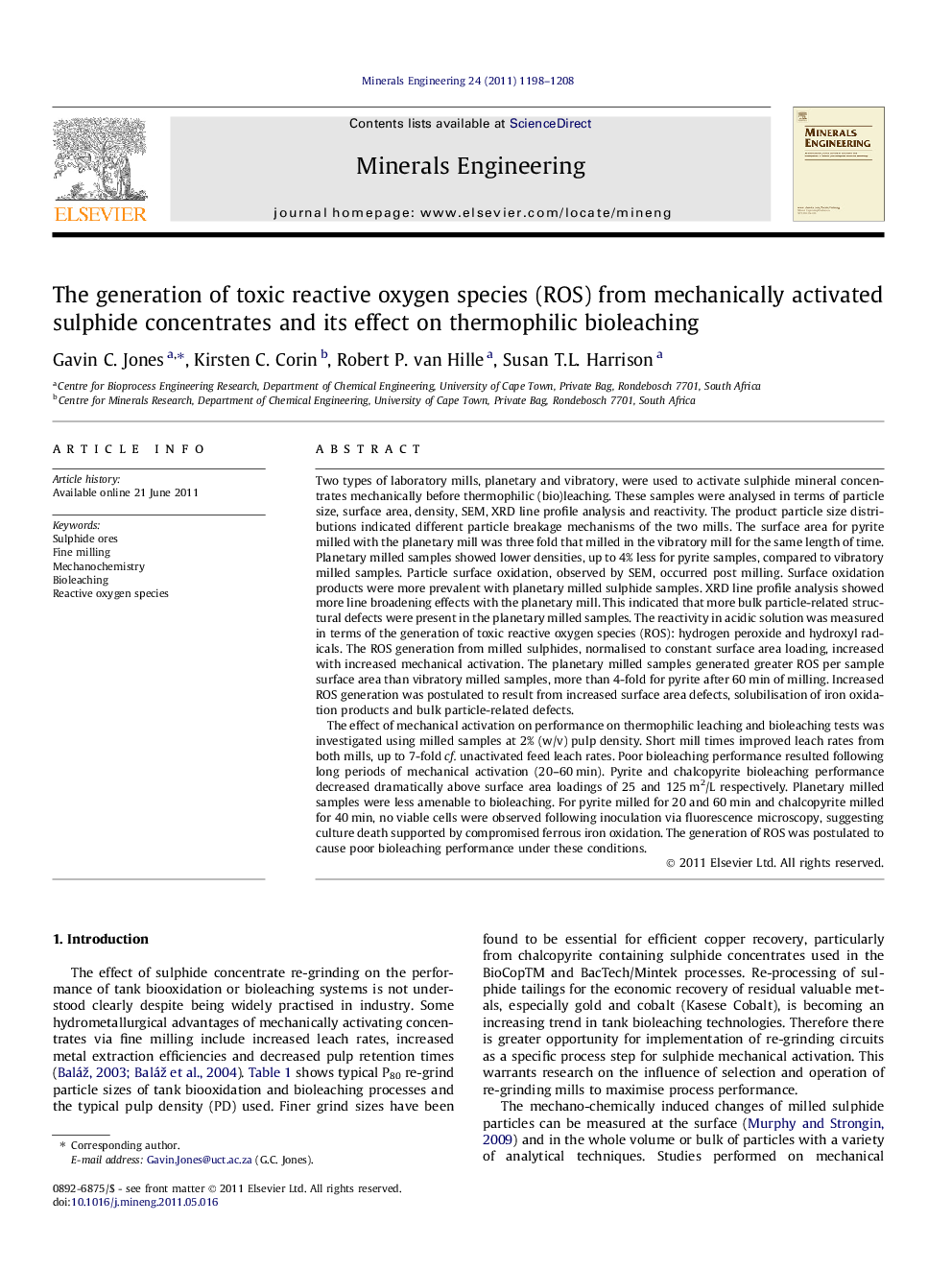| کد مقاله | کد نشریه | سال انتشار | مقاله انگلیسی | نسخه تمام متن |
|---|---|---|---|---|
| 233890 | 465371 | 2011 | 11 صفحه PDF | دانلود رایگان |

Two types of laboratory mills, planetary and vibratory, were used to activate sulphide mineral concentrates mechanically before thermophilic (bio)leaching. These samples were analysed in terms of particle size, surface area, density, SEM, XRD line profile analysis and reactivity. The product particle size distributions indicated different particle breakage mechanisms of the two mills. The surface area for pyrite milled with the planetary mill was three fold that milled in the vibratory mill for the same length of time. Planetary milled samples showed lower densities, up to 4% less for pyrite samples, compared to vibratory milled samples. Particle surface oxidation, observed by SEM, occurred post milling. Surface oxidation products were more prevalent with planetary milled sulphide samples. XRD line profile analysis showed more line broadening effects with the planetary mill. This indicated that more bulk particle-related structural defects were present in the planetary milled samples. The reactivity in acidic solution was measured in terms of the generation of toxic reactive oxygen species (ROS): hydrogen peroxide and hydroxyl radicals. The ROS generation from milled sulphides, normalised to constant surface area loading, increased with increased mechanical activation. The planetary milled samples generated greater ROS per sample surface area than vibratory milled samples, more than 4-fold for pyrite after 60 min of milling. Increased ROS generation was postulated to result from increased surface area defects, solubilisation of iron oxidation products and bulk particle-related defects.The effect of mechanical activation on performance on thermophilic leaching and bioleaching tests was investigated using milled samples at 2% (w/v) pulp density. Short mill times improved leach rates from both mills, up to 7-fold cf. unactivated feed leach rates. Poor bioleaching performance resulted following long periods of mechanical activation (20–60 min). Pyrite and chalcopyrite bioleaching performance decreased dramatically above surface area loadings of 25 and 125 m2/L respectively. Planetary milled samples were less amenable to bioleaching. For pyrite milled for 20 and 60 min and chalcopyrite milled for 40 min, no viable cells were observed following inoculation via fluorescence microscopy, suggesting culture death supported by compromised ferrous iron oxidation. The generation of ROS was postulated to cause poor bioleaching performance under these conditions.
► A planetary and vibratory mill was used to mechanically activate pyrite and chalcopyrite.
► XRD line profile analysis showed that planetary milled samples were less crystalline cf. vibratory milled samples.
► Increased concentrations of reactive oxygen species (ROS) was measured from planetary milled samples with increased milling time.
► Shorter periods (2.5-10 min) of mechanical activation cf. longer periods (20-60 min) were more amenable to thermophilic flask bioleaching.
► Oxidative stress was implicated as the cause for poor bioleaching performance in the presence of large concentrations of ROS.
Journal: Minerals Engineering - Volume 24, Issue 11, September 2011, Pages 1198–1208